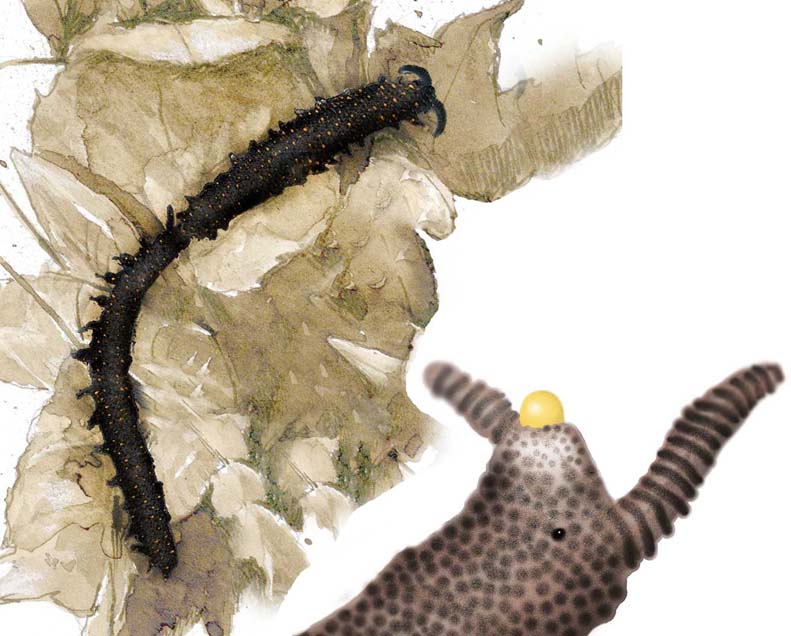Resumen
En el único apareamiento de onicóforos que ha sido fotografiado, en lugar de huir, la pareja permaneció unida a pesar de que fue manipulada. ¿Por qué? La duración de la cópula en onicóforos posiblemente sea controlada por la hembra, más grande y fuerte que el macho, probablemente con la participación de dopamina y ácido γ-aminobutírico. La inseminación a través de la pared corporal puede ser un mecanismo masculino para sobrepasar las defensas femeninas.
Citas
Bonduriansky, R. (2001). The evolution of male mate choice in insects: a synthesis of ideas and evidence. Biological Reviews, 76(3), 305-339.
Bretman, A., Westmancoat, J. D., & Chapman, T. (2013). Male control of mating duration following exposure to rivals in fruitflies. Journal of Insect Physiology, 59(8), 824-827.
Brockmann, C., Mummert, R., Ruhberg, H., & Storch, V. (1999). Ultrastructural investigations of the female genital system of Epiperipatus biolleyi (Bouvier 1902) (Onychophora, Peripatidae). Acta Zoologica, 80(4), 339-349.
Crickmore, M. A., & Vosshall, L. B. (2013). Opposing dopaminergic and GABAergic neurons control the duration and persistence of copulation in Drosophila. Cell, 155(4), 881-893.
Curach, N., & Sunnucks, P. (1999). Molecular anatomy of an onychophoran: compartmentalized sperm storage and heterogeneous paternity. Molecular Ecology, 8(9), 1375-1385.
Manton, S. M. (1938). Studies on the Onychophora, IV-The passage of spermatozoa into the ovary on Peripatopsis and the early developments of the ova. Philosophical Transactions of the Royal Society B, 228(556), 421-441.
Sherbon, B. J., & Walker, M. H. (2004). A new species of Peripatopsis from South Africa, P. stelliporata, with observations on embryonic development and sperm degradation (Onychophora, Peripatopsidae). Journal of Zoology, 264(3), 295-305.
Siva-Jothy, M. T., & Stutt, A. D. (2003). A matter of taste: direct detection of female mating status in the bedbug. Proceedings of the Royal Society of London B: Biological Sciences, 270(1515), 649-652.
Tait, N. N., & Norman, J. M. (2001). Novel mating behaviour in Florelliceps stutchburyae gen. nov., sp. nov.(Onychophora: Peripatopsidae) from Australia. Journal of Zoology, 253(3), 301-308.
Thornhill, R., & Sauer, K. P. (1991). The notal organ of the scorpionfly (Panorpa vulgaris): an adaptation to coerce mating duration. Behavioral Ecology, 2(2), 156-164.


